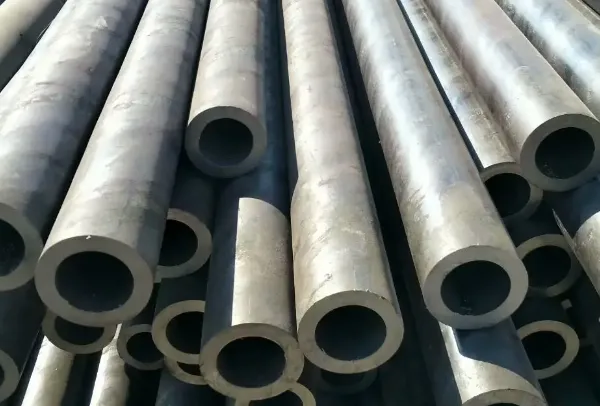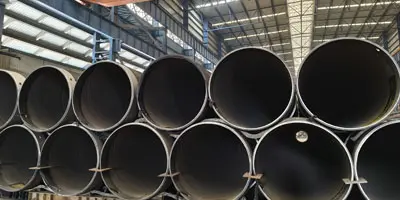In the oil and gas industry, the safety and reliability of pipelines are of vital importance. In order to ensure the uniform standards of oil and gas pipelines worldwide, the American Petroleum Institute (API) has developed a series of standards, among which API 5L is one of the core standards for steel pipes. So, what is API 5L? Why is it important? What fields does it apply to? This article will analyze API 5L in depth.
Definition of API 5L Standard
API 5L is a standard issued by the American Petroleum Institute, and its full name is "Specification for Line Pipe". This standard has been developed to the 44th edition and represents one of the most advanced manufacturing, testing, application and safety management standards. This standard specifies the manufacturing requirements for seamless steel pipes (Seamless) and welded steel pipes (Welded) for the transportation of oil, natural gas, water or other fluids. The core goal of the API 5L standard is to ensure that the steel pipe has sufficient strength, toughness, corrosion resistance and dimensional accuracy during the transportation process to cope with various complex geological conditions and environmental factors.
With the development of API 5L seamless steel pipe technology and the advancement of forming and technology, the application scope of API 5L seamless steel pipe is gradually expanding, especially in API 5L large-diameter seamless steel pipe. The advantages are more obvious. Coupled with the cost factor, API 5L seamless steel pipe has dominated the field of pipeline steel pipes, and the development of API 5L seamless steel pipes. In 2004, about 100,000 tons of seamless pipes were exported, and the steel grades included GR.B, X42, X46, 52, X56, X60, X65, and X70.
Grade classification of API 5L
The API 5L standard divides product grades according to product performance level (PSL) and steel grade (Grade): PSL1 and PSL2
PSL1 is the basic level and is suitable for general use.
PSL2 has stricter requirements, including chemical composition restrictions, strength requirements, impact performance, non-metallic inclusion control, non-destructive testing, etc., and is suitable for more stringent engineering environments.
Main changes and extensions of the 44th edition of API 5L standard
Compared with the 43rd edition, the 44th edition of API 5L has added several additional technical requirements, and put forward higher standards for the applicable environment and performance of steel pipes, especially emphasizing:
1. Requirements for PSL2 steel pipes for resistance to ductile fracture extension (Appendix G): Improve the resistance of steel pipes to fracture extension in low temperature and high pressure environments.
2. Requirements for PSL2 steel pipes in sour service conditions (Appendix H): Used in acidic media environments such as hydrogen sulfide, higher requirements are put forward for resistance to sulfur stress corrosion cracking.
3. Requirements for PSL2 steel pipes in offshore service conditions (Appendix J): Applicable to offshore oil and gas platforms, with special attention to corrosion resistance and structural safety.
5. These three appendices are normative appendices and have the same legal effect as the main specifications. Special attention should be paid when used under special working conditions.
API 5L Line Pipe Steel Grade
The American Petroleum Institute (API)'s line pipe steel grade specifies the chemical properties and mechanical properties of materials used to manufacture line pipes. All
line pipe produced to an API specification must meet the requirements set forth in that standard. The most common API 5L steel grades are Grades B, X42, X52, X60, and X65. The number after the "X" indicates the minimum yield strength of the pipe in thousands of pounds per square inch (PSI). For example, X42 line pipe must have a minimum yield strength of 42,000 PSI. Line pipe is most commonly used for oil and gas transportation. However, it can also be used in water transportation, building construction, and other industrial applications. Understanding steel grades is an important part of understanding the properties of line pipe and choosing the right material for a specific application.
API 5L steel is available in several grades, each with different yield and tensile strength ratings. The most common grades of line pipe are:
Grade X52 – 52 ksi (365 MPa) minimum yield strength, 66 ksi (460 MPa) minimum ultimate tensile strength
Grade X56 – 56 ksi (390 MPa) minimum yield strength, 71 ksi (490 MPa) minimum ultimate tensile strength
Grade X60 – 60 ksi (415 MPa) minimum yield strength, 75 ksi (515 MPa) minimum ultimate tensile strength
Grade X65 – 65 ksi (450 MPa) minimum yield strength, 77 ksi (525 MPa) minimum ultimate tensile strength.
Pipelines conveying Class A, B, or X fluids must be constructed of steel having an area under the stress-strain curve as specified in the material standard. The specified minimum yield strength and tensile strength represent points on the stress-strain curve.
Chemical Composition (for PSL1 Steel Pipes with t ≤ 25.0mm)
|
Steel Grade
|
C (max)
|
Mn (max)
|
P (max)
|
S (max)
|
V (max)
|
Nb (max)
|
Ti (max)
|
|
L175 or A25
|
0.21
|
0.6
|
0.03
|
0.03
|
-
|
-
|
-
|
|
L175P or A25P
|
0.21
|
0.6
|
0.045~0.080
|
0.03
|
-
|
-
|
-
|
|
L210 or A
|
0.22
|
0.9
|
0.03
|
0.03
|
-
|
-
|
-
|
|
L245 or B
|
0.28
|
1.2
|
0.03
|
0.03
|
c,d
|
c,d
|
d
|
|
L290 or X42
|
0.28
|
1.3
|
0.03
|
0.03
|
d
|
d
|
d
|
|
L320 or X46, L360 or X52, L390 or X56
|
0.28
|
1.4
|
0.03
|
0.03
|
d
|
d
|
d
|
|
L415 or X60, L450 or X65, L485 or X70
|
0.28
|
1.4
|
0.03
|
0.03
|
f
|
f
|
f
|
Welded Pipes
|
Steel Grade
|
C (max)
|
Mn (max)
|
P (max)
|
S (max)
|
V (max)
|
Nb (max)
|
Ti (max)
|
|
L175 or A25
|
0.21
|
0.6
|
0.03
|
0.03
|
-
|
-
|
-
|
|
L175P or A25P
|
0.21
|
0.6
|
0.045~0.080
|
0.03
|
-
|
-
|
-
|
|
L210 or A
|
0.22
|
0.9
|
0.03
|
0.03
|
-
|
-
|
-
|
|
L245 or B
|
0.26
|
1.2
|
0.03
|
0.03
|
c,d
|
c,d
|
d
|
|
L290 or X42
|
0.26
|
1.3
|
0.03
|
0.03
|
d
|
d
|
d
|
|
L320 or X46, L360 or X52, L390 or X56
|
0.26
|
1.4
|
0.03
|
0.03
|
d
|
d
|
d
|
|
L415 or X60
|
0.26
|
1.4
|
0.03
|
0.03
|
f
|
f
|
f
|
|
L450 or X65
|
0.26
|
1.45
|
0.03
|
0.03
|
f
|
f
|
f
|
|
L485 or X70
|
0.26
|
1.65
|
0.03
|
0.03
|
f
|
f
|
f
|
a) Cu≤0.50%; Ni≤0.50%; Cr≤0.50%; Mo≤0.15%. Cu, Cr and Ni shall not be intentionally added for grades L360/X52 and below.
b) For every 0.01% decrease in carbon content compared to the specified maximum carbon content, the manganese content is allowed to increase by 0.05% compared to the specified maximum manganese content, but for grades ≥L245 or B but ≤L360 or X52, it shall not exceed 1.65%; for grades L>360 or X52 but c) Unless otherwise agreed, the sum of niobium content and vanadium content shall be ≤0.06%.
d) The sum of niobium, vanadium and titanium content shall be ≤0.15%.
e) Unless otherwise agreed.
f) Unless otherwise agreed, the sum of niobium, vanadium and titanium content shall be ≤ 0.15%
API 5L seamless steel pipes, also known as line pipe steel seamless pipes, include materials like GR.B, X42, X46, X52, X56, X60, X65, and X70. Line pipes are used to transport oil, gas, and water from the ground to petroleum and natural gas industry facilities. Line pipes include both seamless and welded steel pipes, and the ends can be plain, threaded, or coupled. Connection methods include welding, coupling, and socket connections.

API 5L Linepipe Testing and Inspection
Hydrostatic Test
The hydrostatic test checks for leaks in the pipe body or welds by filling the pipe with water and pressurizing it. If any leakage is detected, the pipe must be repaired or replaced. This test ensures pipeline integrity and safety.
Bend Test
The bend test evaluates weld soundness and steel strength by bending a pipe sample into a U-shape. The presence of cracks or defects results in rejection of the entire batch. A successful test confirms mechanical reliability.
Flattening Test
This test measures a pipe’s resistance to deformation and cracking under pressure. The pipe is compressed until deformation or fracture occurs. It helps determine the pipe’s ductility and structural integrity.
Charpy V-Notch (CVN) Impact Test
The CVN test assesses the pipe’s impact toughness at specific temperatures. It is performed on the base metal, weld, and heat-affected zone. It is a key requirement for ensuring performance under tough environmental conditions.
Drop Weight Tear Test (DWTT)
The DWTT evaluates the pipe’s resistance to brittle fracture by dropping a heavy weight on a notched sample. It is essential for confirming ductile fracture behavior, especially in large-diameter pipes used in high-stress environments.
API 5L steel pipe uses
API 5L steel pipe is widely used in the following aspects:
Long-distance oil pipeline
Natural gas transmission trunk pipeline
Pipeline connection from offshore platform to land
High-pressure and high-temperature transmission system
Urban gas transmission and distribution network
Especially in shale gas and deep-sea oil and gas development, the requirements for pipelines are higher, and API 5L steel pipe has become the preferred standard.
Importance of API 5L Certification
Manufacturers who obtain API 5L certification must have:
A sound quality management system (such as ISO 9001)
A complete material tracking system
Process control that meets API Q1 quality standards
Complete testing equipment and personnel qualifications
Therefore, API 5L certification is regarded as a "passport" to enter the international oil and gas market.
Comparison of API 5L with other standards
|
Standard
|
Application Field
|
Description / Key Features
|
|
API 5L
|
Transmission pipelines
|
Core standard for the oil and gas industry
|
|
API 5CT
|
Casing / Tubing
|
Used in downhole environments, offers stronger corrosion resistance
|
|
ASTM A106
|
High-temperature seamless pipes
|
Applied in chemical and boiler industries
|
|
ISO 3183
|
International equivalent
|
Highly consistent with API 5L
|
Summarize
The 44th edition of API 5L standard, based on the core specifications of the 43rd edition, puts forward stricter requirements on the performance of PSL2 grade pipeline steel pipes, and adds high-grade pipeline steels such as X90, X100, and X120, providing technical support for the transportation of oil and natural gas under high pressure and complex geological conditions.
As an engineering party or purchaser, in actual projects, API 5L steel pipe products should be reasonably selected in combination with PSL grade, steel grade, use environment, chemical composition and connection method to ensure efficient, safe and compliant operation of the project.
Choose BAOWI Steel – Where Quality, Strength, and Service Flow Together.






 English
English Español
Español بالعربية
بالعربية











 Phone :
Phone :  Whatsapp :
Whatsapp :  Email :
Email : 


